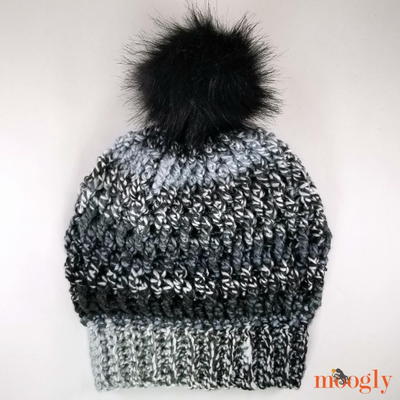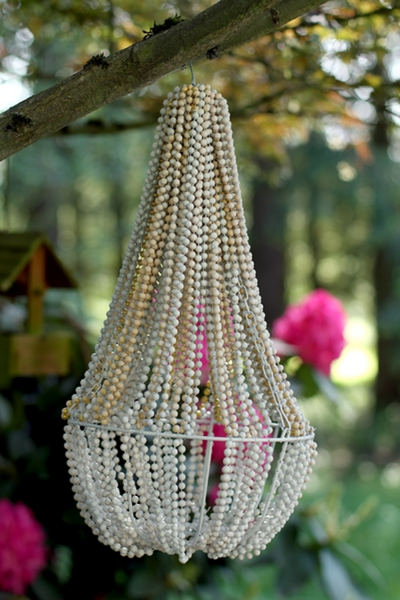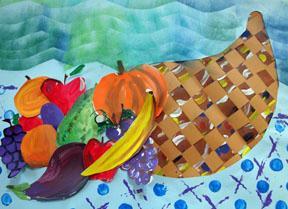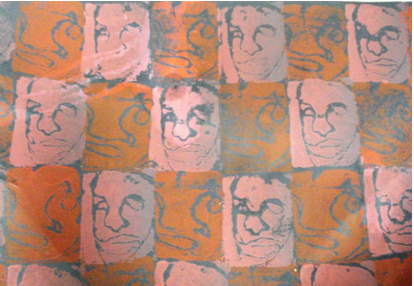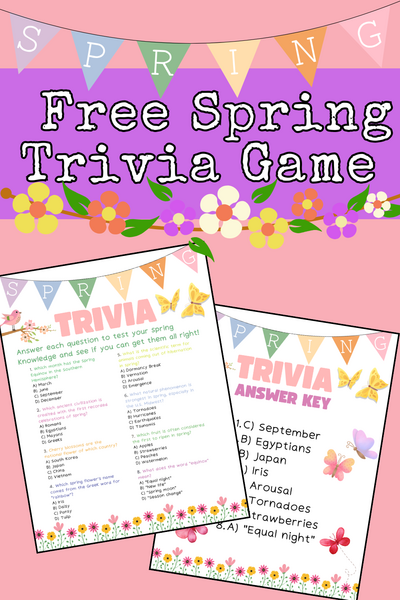Celebrating Fall
Goal (Terminal Objective): Students will learn how to recognize organic shapes in nature. They will learn how to turn simple, recognizable, organic shapes into an abstract design based on repetition with this lesson from Sargent Art.
Objective: Students will create a unified composition celebrating fall by using leaves or flowers as a recurring shape.

Target Grade: 2
National Standards:
Visual Arts Grades K-4 Content Standard 1: Understanding and applying media techniques and processes
Visual Arts Grades K-4 Content Standard 5: Reflecting upon and assessing the characteristics and merits of their work and the work of others
Visual Arts Grades K-4 Content Standard 6: Making connections between visual arts and other disciplines (Science Cross Curriculum Connection)
Purpose: Students will observe and find organic shapes in nature. Students will create a fall art project using repeated shapes. Students will be introduced to repetition in art and will look at works by George Bellows, Escher, and Wayne Thiebaud.
New Vocabulary: organic shapes, repetition, abstract, recurring, blend, George Bellows, Escher, Wayne Thiebaud
Materials:
- Big Ones Crayons
- 10-Well Pallette Brush
- Water Colors
- 8x11, 9x12, or 11x14 white drawing paper
Time: 2 class periods
Introduction and Motivation (Set):
1. Take the class on a nature walk. Point out and discuss all of the different organic shapes found in nature. Collect different sizes and shapes of leaves or flowers. Look at all of the collected leaves. How do they differ? Are any two exactly the same?
2. Discuss the principle of art known as repetition. View and discuss the repetition in works of art by George Bellows (New York), Escher (Heaven and Hell), and Wayne Thiebaud (Eight Lipsticks and Three Machines).
Instruction:
Lesson 1:
1. Observe nature.
2. Using a pencil, trace leaves or draw or trace flowers several times, filling up as much of the paper as possible.
Lesson 2:
1. Trace over the pencil lines with big crayons. Make very thick, heavy lines. Use fall colors. You can even use more than one color on each shape.
2. Use an eraser to smear/blend the colors inward. Press hard to make wax smear more.
3. Using watercolors, paint over shapes and paper to fill in entire paper. Notice how the paint reacts differently when applied to the crayon verses the uncolored paper.
Activities:
(1) Guided Practice:
1. Students observe nature and discuss the differences in organic shapes.
2. Students view and discuss artists’ works representing repetition.
3. Students draw or trace leaves first with pencil and then trace pencil lines with crayons.
4. Students are given smearing and painting directions to create nature repetition art.
(2) Independent Practice and Check for Understanding:
1. Teacher circulates, answering questions, and providing help as needed.
(3) Closure:
1. Students show their work to the class.
2. Students discuss the process used.
Evaluation:
Level One -- The finished design successfully shows a clear understanding of a repetitive design using organic shapes. Students created original designs using new and different art techniques. Students handle materials with confidence. Craftsmanship is outstanding.
Level Two -- Students understand repetitive designs and how to create an interesting composition. Craftsmanship is good.
Level Three -- The finished design shows repetition of the use of organic shapes. The student has shown little technical skill. Design is not organized or interesting. Craftsmanship is minimal.
Level Four -- The art does not display repetition. There is no technical skill. Student needs much support in handling materials. Work is messy. Design is not organized or is incomplete.
Tips: The thicker and darker the crayon lines are, the more they will blend and bleed, which is a really nice effect.
Notes: The flowers can also be used for a "Celebrating Spring" lesson. Any object can be repeated for this project (candy canes for Christmas, eggs for Christmas, etc). Just use your imagination.
Extension: Younger grades can complete an easier picture by omitting the painting. Designs look very nice without adding the watercolor. Designs could also be made more complicated by filling in all spaces with nature shapes. Projects can be mounted or matted for a more finished look.
Read NextThanksgiving Cornucopia




